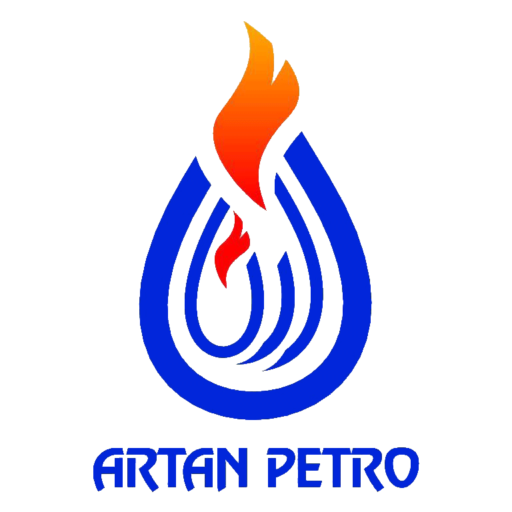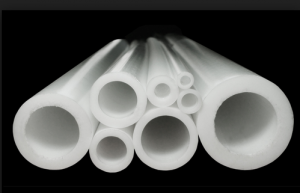


The evolution of polytetrafluoroethylene (PTFE) – more commonly known as Teflon® – from a niche product to high value applications to basic needs has been gradual. However, over the past two decades, as a result of increasing commercial use in more than 200 industrial, consumer, and medical applications, PTFE has become an important material in a variety of applications.
Sheets, rods, coatings and components made up the bulk of the PTFE product market.
PTFE pipe is now emerging as the main growing area.
PTFE pipe is used in various fields such as automotive, chemical, electrical and medical.
Demonstrates key features that demonstrate the diversity of PTFE pipes.
While showing potential applications in various fields.
Therefore, in the automotive industry, PTFE high temperature resistance of more than 250 ° C makes it ideal for transferring liquids at high temperatures and high efficiency in mechanical cables.
PTFE pipes are in great demand in medical applications, which is justified by their excellent sliding properties and chemical immobilization.
Therefore, catheters consisting of PTFE tubes can be placed in the human body without any negative consequences.
In chemical applications such as laboratories, PTFE is an ideal alternative to glass due to its immobility and durability.
In the field of electrical engineering, PTFE is suitable for insulating high pressure cables due to its excellent dielectric properties.

PTFE pipe is classified according to the field of application, along with three main categories.
Which are defined based on the diameter and wall thickness of the pipe, respectively.
While spaghetti tubes are mainly used in medical technology.
PTFE pressure hoses and PTFE coatings are often used in the automotive sector.
Even in categories, PTFE pipes offer different variations, each allowing for different uses.
In general, small diameter spaghetti tubes are mainly used in the medical equipment industry.
Two main features are very important for usingPTFEin this field:
Lubrication and biocompatibility.
Compared to other plastics, fluoropolymers have excellent lubrication.
PTFE is the most lubricating polymer available, with a coefficient of friction of 0.1, followed by ethylene propylene fluorine (FEP) at 0.2%.
Accordingly, these polymers constitute the vast majority of fluoropolymer tubes used in medical devices.
The issue of biocompatibility of any polymer used in medical devices is very important.
PTFE is very suitable for use in this area and has been used for a long time.
The uniqueness of PTFE pipe is due to the complexity of PTFE as a polymer.
While most polymers can be easily molded with injection molding, complex shapes are created, PTFE can only be produced by pressure molding due to its high melting point and exceptional melt viscosity.
Modification in PTFE can be produced by compression molding or cold paste extrusion.
The high melting point of PTFE also makes extrusion impractical – as is usually done.
Therefore, specialized extrusion of PTFE paste is being used more and more as a result of the growing demand for PTFE pipes.
Extruded versions of PTFE were first used in wires and cables.
The industry in the 1950s, with its excellent dielectric properties, is especially important for the developing electronics market.
The first such pipe was made with a PTFE extruder on the wire, including the subsequent removal – a costly process.
In the 1960s, a technique was developed that could extrude PTFE without a wire core.
Using this process, PTFE pipes can be produced economically in long and continuous lengths.

Synthetic resin is powdered and its particle size is about 0.5 mm.
This wax powder responds to bruising and sensitive mechanical shear fibrillation.
Accordingly, special care must be taken during processing, which is usually done at a temperature of about 20 ° C.
Whereas in conventional compression molds, the powder only needs to be thoroughly sieved and then compressed, in
During the extrusion process, the dough is first mixed with hydrocarbon or alcohol extrusion.
The powder / syrup mixture is then left in a sealed container for 8-10 hours to be processed in the next steps.
The preform represents a cylindrical billet molded from a prefabricated mixture using hydraulic pressure.
Forming a 30 kg billet takes about 2 hours. Later, it takes 8 hours to ensure that excess air escapes.
Raw billets are inserted into the extruder – which is the main component of the process – and as a result a mold and a mandrel are installed on top of it.
During the extrusion process, the mold acts as an important tool in determining the strength and final dimensions of the pipes.
Starting the extrusion process, the preform is pressed by the extruder on the mold and mandrel, forcing the polymeric material to the desired shape.
At this stage, the pipe is marked “green” and is prone to mechanical deformation.
The green tube passes through the furnace and is heated to a very low temperature.
Here is the idea of evaporating the soul in the tube and care must be taken not to reach the flash point of the soul and cause it to ignite.
PTFE pipe is baked at 350-400 ° C.
Depending on the thickness of the sample, the duration of the curing cycle varies and may take up to 24 hours in the case of thick-walled tubes.
Next, the pipes are cut to the required lengths.
For medical hoses, sealing the end of the tube is necessary immediately after the material is removed from the oven.
This closure ensures the cleanliness of the inner surfaces of the pipe, which has already been exposed to temperatures above 300 ° C.
The next cleaning process requires a clean room as a minimum standard for PTFE pipes.
After the cleaning process is completed, they are finally packed in polyethylene sleeves for carrying.
For more information on the latest news and our portfolio on Artan Petro Kayhan website
See.
Meanwhile, you, the regular companions of Design Pars, can follow Artan Petro Kayhan on her Instagram page.
Production of General purpose polystyrene with different grades

info@artanpetro.com
Qom Shokouhieh Industrial Town, end of the second phase, Babaei Square, Babaei St., Alam al-Huda St. 1, No. 1331
+982533346396![]()
+982533346473![]()